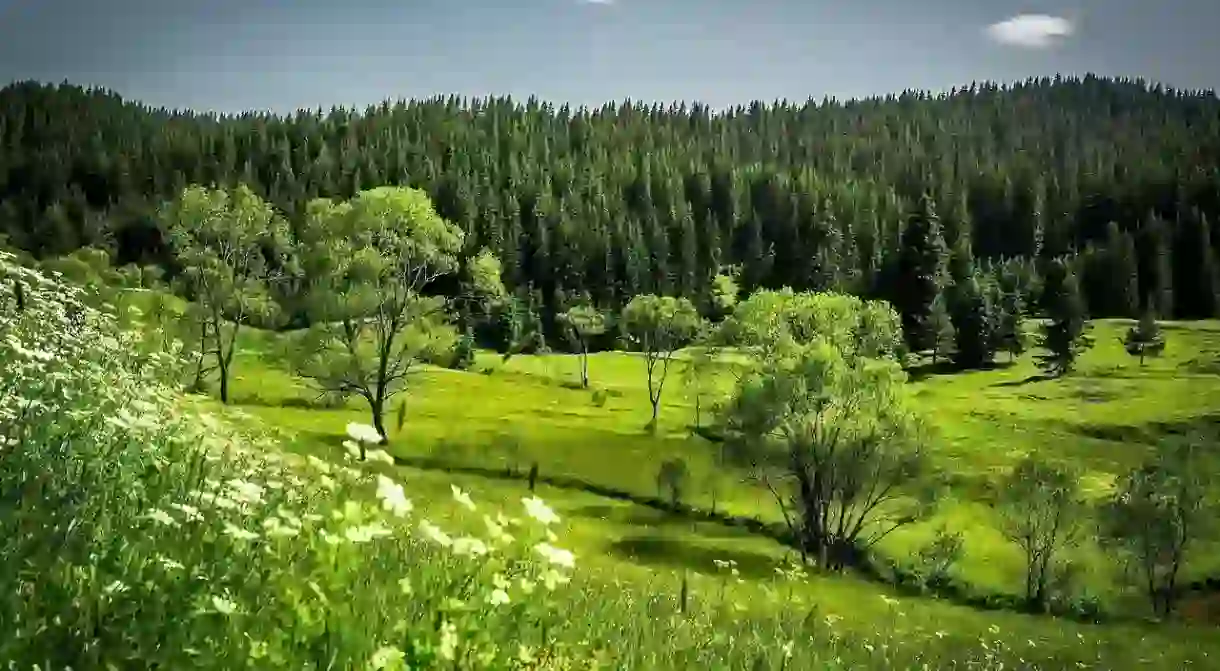An Insider's Guide to the Rhodope Mountains

If you ask Bulgarians which is their favorite mountain range in Bulgaria, many, if not most, of them would say the Rhodope Mountains. It’s not the best for hiking, but it’s the best for culture, rock phenomena, and traditional festivals. Read Culture Trip’s insider’s guide to exploring the Rhodopes.
Villages in the Rhodope Mountains
The Rhodope Mountains are home to some of the most charming traditional villages perched on ridges and tucked away in valleys. In fact, almost every village on your way deserves a bit of your time but here are some highlights. Plan a visit to Shiroka Laka village to see its specific black-and-white traditional architecture and perhaps hear some of the students of the biggest folklore music school in Bulgaria practicing.

Gela is another village famous for its annual bagpipe music contest held on the first weekend in August. Hundreds of bagpipe players gather for the festival and turn the mountain into a huge stage for the more than 20,000 visitors who have been coming to listen in recent years.
The village of Smilyan is known nationwide for its… special beans! The variety grown in Smilyan is more buttery, and its taste is different in a way that is difficult to explain. Just visit Smilyan and stop at one of the restaurants in the center of the village to try it yourself.

Skiing in the Rhodope Mountains
Skiers can enjoy the snow at one of the biggest ski resorts in Bulgaria, Pamporovo. A lift is available in Chepelare, too, where you’ll have the cozier atmosphere of a little mountain town. There’s a small ski museum in the center of Chepelare (literally, one hall) showcasing the history of Bulgarian winter sports.

Natural phenomena in the Rhodope Mountains
The Rhodopes are rich in caves and rock phenomena. The Devil’s Throat Cave (accessible with a guide) is the place where according to the legend Orpheus entered the Underworld. You will be able to see the highest cave waterfall in Bulgaria inside, at 137 feet (42 m). The Yagodina Cave is a 10-km maze of tunnels, which you reach after driving through the Buynovsko and Trigrad Gorges.
Also, don’t miss the strange and beautiful rock formations scattered around the Rhodopes – the Stone Wedding, the Stone Mushrooms, and the Wonderful Bridges.

Ancient heritage
The Rhodope Mountains were the land of the ancient Thracians, the ancient Romans and the proto-Bulgarians. Many Thracian sanctuaries, mounds, and rock-hewn tombs can be found today, as well as Roman villas and cities. Visit the Perperikon archaeological site near Kardzhali (a whole city with remains of different eras), Villa Armira (a perfectly preserved villa of an ancient Roman nobleman), or just keep an eye on the rocks along the road when you’re driving. At many places, you’ll see niches hewn into the rocks by the Thracians. Their purpose remains unknown to this day.

Cuisine of the Rhodope Mountains
It’s almost impossible to talk about regional cuisine in such a small country like Bulgaria, but if there’s one region with very distinctive food, it is the Rhodopes area. Even Bulgarians would drive for hours to enjoy a patatnik (a slowly baked potato and Bulgarian feta cheese dish) and a kachamak (a maize dish similar to Italian polenta or Romanian mamaliga).

Roads and transportation
The Rhodope Mountains take up a large area of Southern Bulgaria and have a few major roads crossing them. Some of the smaller villages are accessible through bumpy and narrow roads, especially if they are close to the Greek border or have too few inhabitants. A major highway leads to Greece (through Kardzhali and Makaza border crossings).













